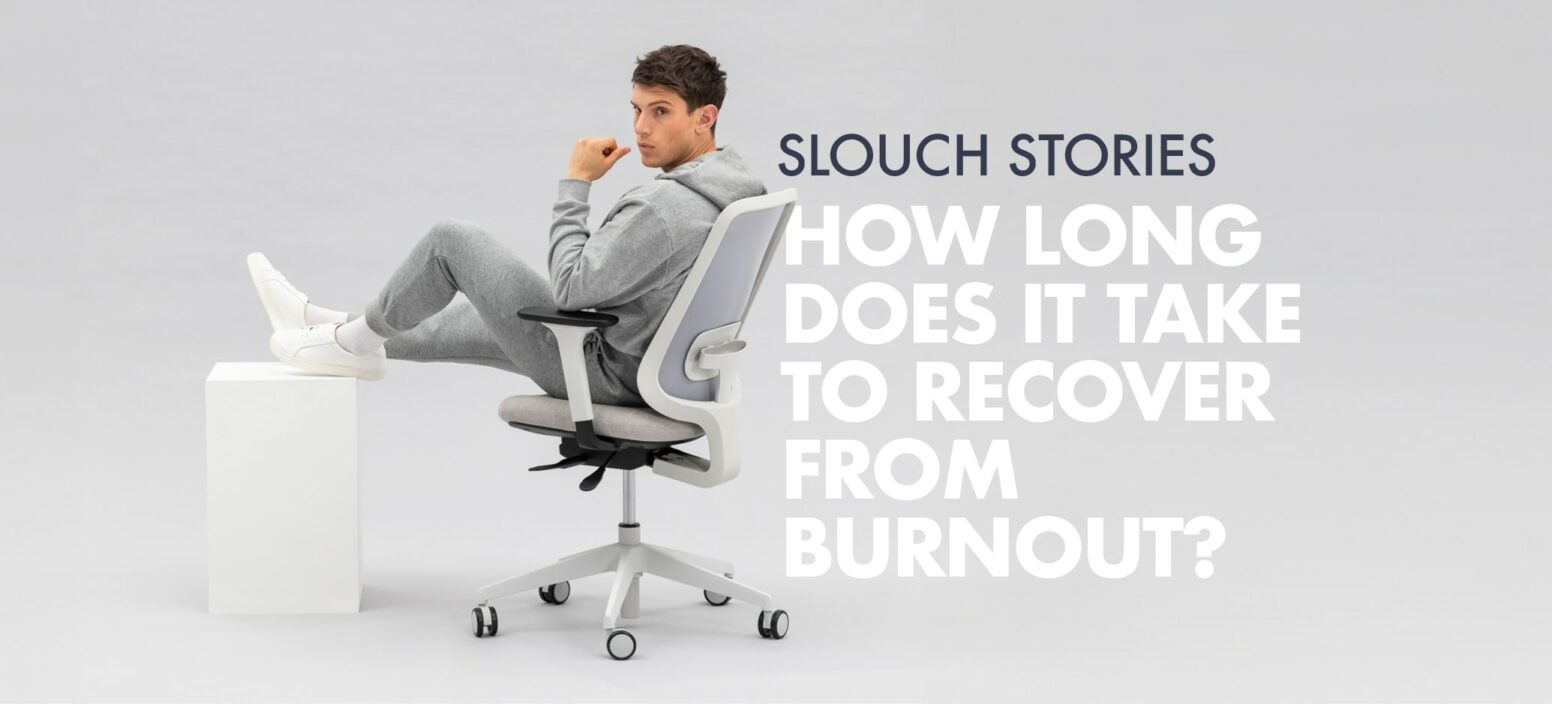Sadly questions like how long does it take to recover from burnout or how to tackle burnout are growing more and more common. Stresses and strains from different directions can build up to a fever pitch – as mental health is impacted, burnout at work becomes more and more likely.
HOW LONG TO RECOVER FROM BURNOUT?
The time it takes to recover from burnout will vary based on the individual, and varies even more based on how the individual responds to burnout, whether they acknowledge it or carry on without making changes. It could take you three months to recover from burnout, whereas for some people it could take 3 years.
The most important thing to remember with burnout is how you deal with it and the recovery steps you take to tackle the burnout.
BURNOUT RECOVERY STEPS
As outlined by Bernier (1998), there are 6 broad stages to burnout recovery:
STAGE 1 – CRISIS POINT AND RECOGNITION OF BURNOUT
This initial stage involves acknowledging and recognising the existence of your burnout. This could be prompted by a crisis or a significant realisation of your mental and physical state, such as exhaustion, agitation or disillusionment.
STAGE 2 – EMOTIONAL OR PHYSICAL DISTANCE FROM WORK
This step involves you distancing yourself from work-related triggers. This could mean you take more breaks, set firmer boundaries, or create more emotional and physical detachment to begin the recovery process.
STAGE 3 – RESTORATION OF HEALTH
Focused on physical and mental well-being, this stage emphasises self-care and moving attention away from work and towards the self. You might prioritise rest, engage in activities that help you relax, and work on restoring both mental and physical health.
STAGE 4 – REVISION OF VALUES
This stage involves lots of reflection on personal values and rebalancing the things that matter. You may reconsider your goals and aspirations, begin asking what holds significance in your life, and make professional decisions based on your values.
STAGE 5 – EXPLORING WORK OPTIONS
You’ll likely begin to consider alternative work options. This could be anything from reduced hours, increased pay, a change of department, job role or career. This could change their current professional situation.
STAGE 6 – MAKING A CHANGE
The final stage is taking action. If you’ve gone through the previous stages, allow them to inspire changes in your professional life. Maybe you need a change of scenery with a new job, a new role or a new career altogether.
4 WAYS YOU CAN TACKLE BURNOUT
Sure, you can reduce burnout by making changes to your workstation, like with an office chair which keeps you comfortable, or an office desk that keeps you organised, but your recovery activities outside of work can be just as important – there are many things in a workplace which are out of your control.
If you rebalance the things outside of work, other things which matter have a chance to swell and become more of a precedent in your life, enriching your personal time, while work commitments have a chance to shrink back a little, to give you some breathing room.
So let’s see if any of these activities can help you achieve a sense of renewal and help you take back some control.
1. SET CLEAR WORK/LIFE BOUNDARIES
Unsurprisingly, doing things which are unrelated to work and your day-to-day routines (which may also feel like work or chores) can jolt you out of the mundane and into something a touch more stimulating.
Burnout and mental health challenges like depression, anxiety and exhaustion go hand in hand.
Mental Health UK’s research found that key factors contributing to burnout include high or increased workload or volume of tasks (54%) and working unpaid overtime beyond contracted hours (45%)
Persisting with work-related tasks, burning the midnight oil and lots of overtime activities after work hours or during the weekends can make many feel spent and with lowered energy levels.
We discuss setting clear boundaries in our blog about 5 good habits when working from home.
Shut your laptop, turn off your work devices, silence notifications and resist the urge to check your emails. There’s nothing wrong with professional development and learning, but in the interest of detachment – try reading some fiction for a touch of escapism, rather than a business book. You could also try spending time with people outside of your circle of work friends.
So set a clear boundary and give yourself a shock to the system with something out of the ordinary.
2. INDULGE IN RELAXATION AND SELF-CARE MORE REGULARLY
Another primary way to recover from burnout is to relax as much as possible. The narrative on self-care tends to prescribe slowing down, getting away and being alone. And for some, these might be perfect ways to relax. But also consider what relaxes you, uniquely. If you relax by reading a book, great. But if you relax by socialising with friends or working hard on a building project in your community, spend your time in these ways.
The key is to consider your own energy levels and define relaxation for yourself – It may sound contradictory – but physical activity is its own form of relaxation.
An outlet and a catharsis – a pivot towards a different kind of activity that leaves you feeling invigorated and accomplished. So why not try a jaunt through the hills, wild swimming at a lake or river, or head off to the beach with friends or family.
All forms of exercise and keeping active, but taking you well out of work mode and into play mode can help reduce burnout.
3. ESTABLISH OR REESTABLISH EXPERTISE
In a workplace, feeling overwhelmed by an excessive workload can leave you feeling ineffective and incapable even if the problem isn’t your fault.
So, to counteract these feelings, as well as doing what you can to improve your performance in work, you can also do things in your free time which reinforce your abilities, skills and talents. In doing so, you can begin to tackle the gnawing feeling in your head that you’re not good enough, and contribute to your wellbeing.
So find things you love to do or that you know you’re good at to give yourself a better chance of recovering from burnout and reigniting your productive spark.
4. TAKE BACK CONTROL
Another factor of burnout is feeling trapped or out of control. This could be linked to a number of things at work – you might feel like you’re uncertain of the trajectory your career is taking.
You might fail to identify growth opportunities and feel stagnant. Or perhaps you feel like you lack control due to the people around you at work. So let’s turn those feelings on their head – seek out activities where you have more control.
From something simple like taking charge of planning a trip with friends or a night on the town, to taking up a leadership position in your favourite sport, these can help rebuild a sense of control in your life which can feel snuffed out in the workplace. Rebuilding this aspect of you as an individual could lead to an improved sense of self and heightened confidence, which can then have a positive knock-on effect in the workplace too.
SET YOURSELF UP FOR SUCCESS WITH HOME OFFICE FURNITURE FROM SLOUCH
Ultimately, when exploring how long does it take to recover from burnout, the answer can vary and prevention is better than cure. Setting yourself up with an ideal workspace that facilitates comfort and productivity is a good place to start. Feel free to find some inspiration in our story about home office ideas for a work-from-home set-up
That’s precisely what drives us at Slouch – to provide you with the workspace you deserve, to feel empowered and content. Helping to make your workday feel shorter with products backed up by science and engineering. Your needs – at the core of all that we do.
So if you’re hoping to set up a fresh new home workspace to invigorate your daily grind, fill out this contact form today. For general enquiries, email us at [email protected] and our experts will be in touch to assist.

